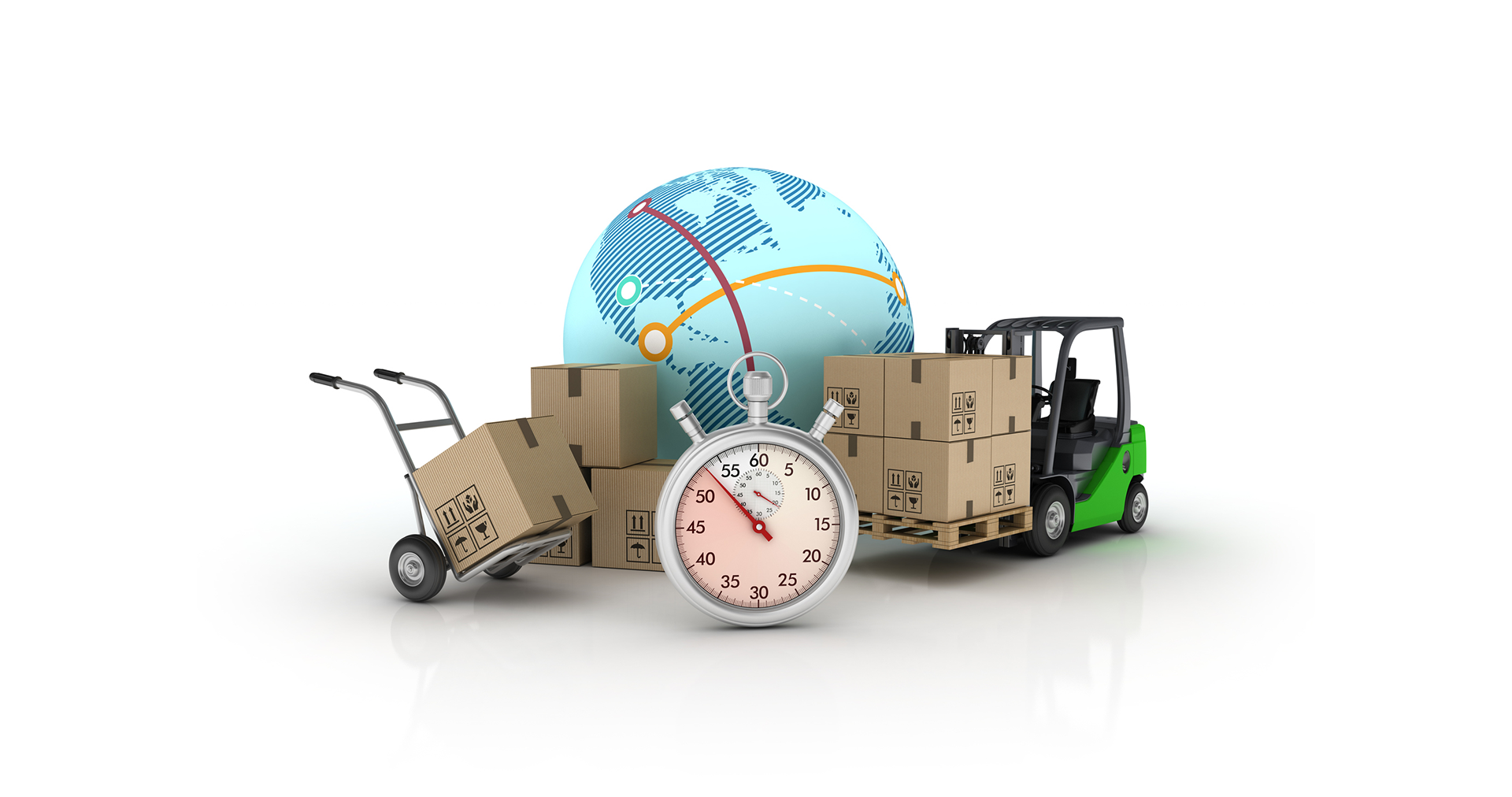
Clarifying the Difference Between Demurrage, Detention, and Per Diem Fees
Demurrage and detention fees don’t have to be a mystery…
Get ahead of them with our terminology guide and tips below!
The terms demurrage, detention and per diem are often used interchangeably, but are they the same thing? Surprisingly, they aren’t.
To make matters even worse, the rates and policies around them can vary from port to port, and from steamship line to steamship line.
In case you didn’t know, the Federal Maritime Commission is currently investigating these practices, and our sister company ContainerPort Group (CPG) has been following the investigation on their blog. Click here to find out how CPG has played a key role in getting the issue of Demurrage and Detention fees in front of the commission and for more updates on the case.
Whether you’re importing or exporting, you’ve probably come across these sometimes unexpected fees that can stop your shipment in its tracks. Typically incurred when cargo is left at a port too long, or when there is a delay in returning equipment, unanticipated demurrage and detention fees can put a big dent in your bottom line.
But don’t worry! Check out our handy guide below, which will help you better understand what demurrage and detention fees are and how to avoid them.
Don’t be afraid to ask for help either! You are always welcome to contact one of our experts if you have any questions that aren’t covered here.
What you’ll learn in this article:
- What is Free Time?
- What is Demurrage?
- What is Detention?
- What is Per Diem?
- What is Driver Detention?
- What is Storage/Ground Rent?
…Or you can jump right to the definitions here.
Note: The terminology can differ a bit across countries, so for this article, we are focused on practices that occur in the USA.
Let’s dive right in!
What is Free Time?
Free time is the amount of time that a carrier’s equipment may be used without incurring additional charges.
In order to avoid demurrage and detention charges, import and export shipments must be handled within a specified grace period, referred to as free time.
Free time is the period of time during which no demurrage or detention charges will apply for the use of a container, in addition to basic freight costs. These rates and rules may be specified in a Vessel Operating Common Carrier (VOCC)’s tariff, a terminal or port authority’s Marine Terminal Operations (MTO) schedule, or in a service contract between a Beneficial Cargo Owner (BCO) or shipper and a Non-Vessel Operating Common Carrier (NVOCC).
Free time in contracts can vary, so it is up to you to know and understand just how much free time you get.
Related to free time is “Last Free Day” or LFD, which refers to one of two situations: The last free day at the port or rail ramp before the steamship line starts charging demurrage, or the last free day for the ocean container that has been taken out from the port or rail ramp before the steamship line starts charging a detention or usage fee.

What is Demurrage?
Demurrage refers to costs incurred by a customer for using equipment when loaded cargo containers are left at the port terminal for longer than the allowed free time.
Demurrage is charged when containers are still full and under the control of the shipping line, and have not been cleared through customs or picked up by the consignee.
Once free time expires, you will be charged a daily fee for using equipment (container and/or chassis) until your cargo is removed. Amounts may differ based on terminal or carrier and often increase after an initial period of time. It is important to note that demurrage fees are not always the same as storage fees.
You’re at risk of incurring demurrage fees on both imports and exports.
On imports, demurrage can occur if the containers are not picked up once they’ve arrived at the port.
When it comes to exports, demurrage can occur if the exporter delivers goods to the port prior to the agreed upon dispatch date (when the vessel arrives).
Why is demurrage charged?
Demurrage fees are necessary to continue the flow of commerce. Containers left at the port affect available yard space and port productivity, causing berth and congestion issues. Facilities need to turnover both storage space and equipment as quickly as possible in order to make it available for new shipments coming into port. Demurrage fees, therefore, incentivize shippers to stay on schedule and discourage merchants from using the ports for storage.

Who enforces demurrage fees?
Terminal Operator, Steamship Line, Railroad, and Airport authorities all assess demurrage fees.
How much time do you have to move your cargo before you incur demurrage fees?
Typically, 3-7 free days are offered, but each terminal has slightly different rules, and that number can change at any time. Amount of free days can also be negotiated in contracts, but negotiating power depends on the volume you are moving as a shipper.
How much does demurrage cost?
 Daily charges range from $75 to $150 per container per day; however, charges can and do increase the longer the cargo stays on the terminal.
Daily charges range from $75 to $150 per container per day; however, charges can and do increase the longer the cargo stays on the terminal.
For example, Let’s say you have 3 days of free time. After that, a charge of $100 per day applies for 3 days. From 4 to 10 days, the fee rises to $250 and finally to $350 for any day exceeding ten days.
If picking up your import shipment was delayed for 14 working days, your cost would be:
14 days – 3 free = 11 days of demurrage
($100 x 3 days =$300) + ($250 x 6 days = $1,500) + ($350 x 2 days = $700) = $2,500 per container
You would have to pay these fees upfront to recover your cargo.
What if you had 10 containers in that shipment? That would bring your cost to $2,500 x 10, or $25,000! …Yikes!
Important: Demurrage must be paid before the cargo can be picked up from the port, so while you may find out about these fees early, advanced planning is the key to limiting your exposure to them.
What are typical situations that lead to demurrage?
-
Delay in payment. Any delay in payment will lead to cargo being held at the port.
- If the shipper paid for only part of a shipment, the vessel can refuse to release the freight until paid in full.
- This includes payment for the goods purchased or acceptance of the payment terms from the Supplier.
- Payment or agreement of payment terms must be satisfied for the carriers’ bill of lading to be released if an original bill of lading is issued.
-
Incorrect or incomplete information on your import or export documents holds up processing through Customs, mistakes (even simple typos) in paperwork keep your cargo from being released.
-
Lack of proper scheduling and planning.
- Consignee is unaware of the arrival of the cargo and unable to do the customs clearance in time (wrong Notify party information, or missed the notice).
- The container is delivered to the port by the carrier but the shipper is unable to export it on time.
- The shipment misses its scheduled vessel and gets rolled onto a different one which arrives later.
- No open appointment slots are available before the LFD.
-
No truck, driver or chassis are available by the LFD.
-
The container is stopped by customs, police or other authorities for inspection of the cargo, which may take longer than expected.
-
Port congestion, weather or labor strikes cause the port to close or operate very slowly.
How can you avoid or minimize demurrage fees?
The easiest way is the work with a knowledgeable freight forwarder like UWL that will keep a watchful eye on your shipments and ensure that your cargo arrives on time without any additional costs. UWL also has a team of in-house Customs Brokerage specialists that will handle pre-clearing your shipments for you, making sure your import or exports shipments go through without a hitch!
Here are some tips from Eric Gilmore, Import Manager at UWL:
1.) Proactive planning is crucial to limiting your exposure.
Make sure you know in advance how many free days you have so that you can ensure that your cargo is moved before free time runs out. Depending on the terms of sale and delivery, the choice of port and routing to be used also becomes important, as some ports/VOCCs are more willing to negotiate free time than others.
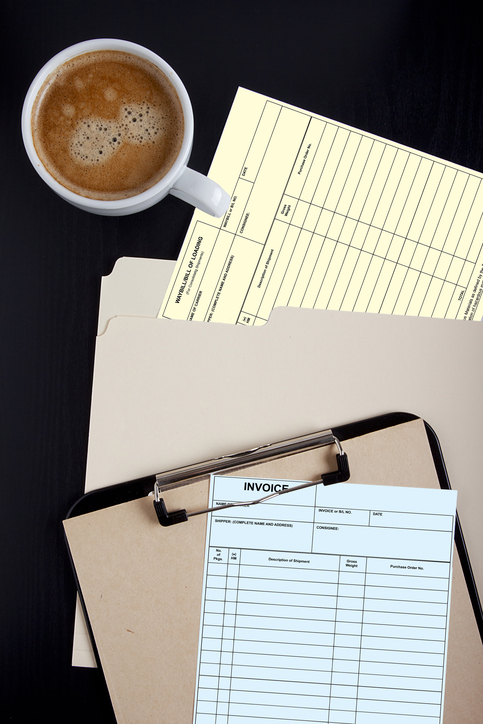
2.) Ensure that all of your documents are in order prior to shipping the goods.
This means checking that your commercial invoice has the correct PO info, terms of sale and country of origin, your packing list has details of the cargo and that all necessary documents are included with the shipment.
To clear shipments through US Customs, shippers need four documents:
- Commercial Invoice
- Bill of Lading or Airway Bill
- Packing List
- Arrival Notice
Verifying that your paperwork is complete will help prevent any hold ups when dealing with customs.
3.) Pre-clear your cargo through customs and share shipment delivery instructions with all parties in advance.
This includes the carrier, vendors and third-party providers. As long as your paperwork is complete, you should be able to have your cargo cleared five days before the vessel arrives if shipping via ocean or at “wheels up” for air freight.
In addition to avoiding delays through customs, pre-clearing cargo whenever possible also allows for advanced coordination with truckers well before free time expires, and keeps your freight moving timely.
If you are new to importing or exporting and need help understanding customs clearance, check out the US Customs and Border Protection’s Tips for New Importers and Exporters.
4.) Confirm that your trucker can pick up the cargo within the allotted free time.
Make sure that a trucker has been assigned to your shipment. Always ensure your freight forwarder has relationships with alternate trucking companies, especially if you’re dealing with a particularly busy port. Having a backup truck option could be a lifesaver when capacity is tight or if you are in a time crunch.
5.) Pre-pull your containers.
When you work with a proactive drayage provider like ContainerPort Group, you can take advantage of their pre-pull services. These services involve picking up your cargo from the marine terminal or rail before you start incurring demurrage fees, and temporarily storing it at one of their many secure yard locations until it can be delivered to final destination.
CPG will store your containers at a much lower rate than the cost of demurrage. However, don’t forget you still could have detention and/or per diem charges in addition to chassis and other accessorial charges if the equipment is not returned before your detention free time expires.
6.) Request extended free time.
For larger shippers moving at least 800-1000 containers a year, you may be able to request extended free time from your NVOCC, like UWL, or steamship line during contract negotiations.

What is Detention?
Detention refers to costs incurred by the customer for using equipment beyond the given free time, typically outside of the terminal.
Detention is charged when the carrier’s equipment is still in use by the shipper or consignee beyond the LFD, regardless if full or empty.
There are two main types of detention fees: per diem and driver detention.
Shippers often confuse detention with demurrage. The easiest way to discern between the two is to think of demurrage as fees assessed on laden containers inside a port, and detention as fees assessed on containers outside a port, whether they are laden or empty. This means that even after you’ve moved your cargo out of the port, you need to be prompt in returning the empty containers back to the designated container yard or port.
There are some exceptions to this rule, however. Some steamship lines will charge detention fees for equipment usage beyond the given free time regardless of whether the equipment has left the port or not. This means you can incur both demurrage (port) and detention (equipment) at the same time. The same concept goes for moving loads by rail, where you can incur both rail storage charges at the ramp and detention charges for equipment usage past the LFD.
Detention is also tricky because you can hear it used in several contexts. The easiest way to understand it is to break it into two main categories: per diem for equipment use and driver detention for driver wait time.
What is Per Diem?
Per diem (per day) is a detention fee where a fixed rate is charged per container per day until the equipment is returned to the port or container yard.
Many terminals use the terms detention and per diem synonymously. In both cases, the fees are the result of a late container return and are applicable to both imports and exports. Just like in the case of demurrage, you also have a set amount of free time to return equipment that has been removed from the port. Keeping equipment beyond that free time results in a detention charge, also called a per diem fee.
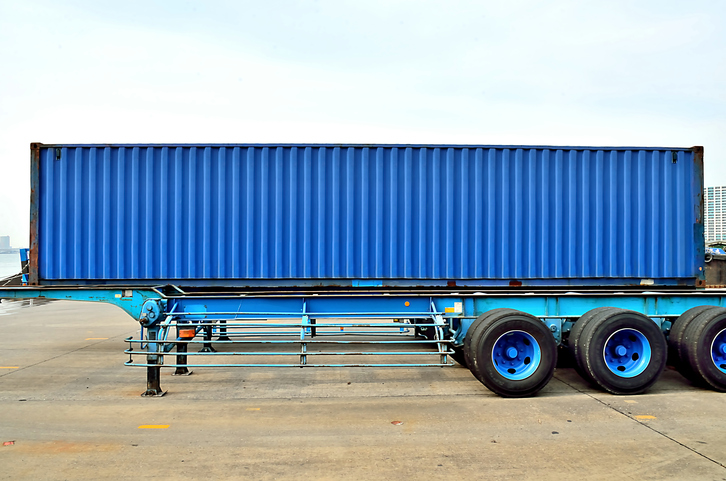
Why is per diem detention charged?
Carriers need to keep their equipment in circulation. When a consignee holds onto equipment for longer than the agreed upon time, it cannot be used by other customers. The per diem charge exists to offset losses from those delays, such as costs from the injection of additional equipment into the carrier’s fleet or chassis pool, and to discourage importers from storing containers for long periods of time.
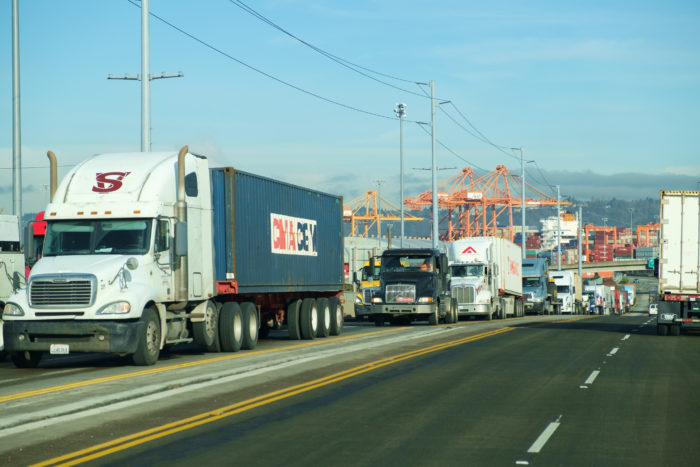
What is Driver Detention?
Driver detention refers to a fee, typically charged at an hourly rate, that a carrier may assess when driver wait time, either at the origin/pickup or destination/delivery location, exceeds the given free time for loading or unloading the truck.
Inland carriers can assess detention as a trucking-related fee. The purpose of driver detention charges is to compensate the driver when they are delayed, generally due to not being loaded or unloaded in a timely manner.
Why is driver detention charged?
Delays can cause a driver to run out of legal driving hours and therefore be unable to complete their delivery. Missing or showing up late to their next scheduled appointment can result in drivers getting fined or even worse, being put out of service. Holdups can also cause the driver to potentially lose their next load and the income that comes with it.
It is important to understand that once a driver’s on-duty clock starts, they can work for the next 14 hours (with 11 driving hours). Once the clock stops for the day, drivers, by law, need to take a full 10 hours off between shifts.
With drivers who are paid by the mile, detention time means losing hours that would have otherwise produced income. The U.S. DOT released a report showing that time spent detained at shipper or receiver facilities reduces truck driver pay by between $1.1 billion and $1.3 billion annually across the truckload sector.

Detention time also increases crash risks and costs. According to KeepTruckin (an ELD supplier), drivers who are detained at a shipper or receiver facility for an “extended detention event” of at least 2 hours, drive an average of 3.5 mph faster once leaving the facility in an effort to make up for lost time.
An extra 15 minutes spent detained beyond the standard two-hour window causes industry crash risk to climb 6.2 percent, the DOT has estimated. That’s an average of about 6,500 additional crashes annually in which driver detention is a contributing factor.

With the new ELD requirements, shippers and receivers are going to have to rethink the amount of time they hold a driver at the dock.
According to FreightWaves, “In the ‘old days,’ i.e. pre-Dec. 17, 2017, drivers who suffered through detention events felt pressured to alter their paper logs and keep driving to make up for lost time. In the new world of electronic logging devices (ELDs), that can’t happen, but detention still does.”
Many motor carriers are also reducing their free time to one hour, making it imperative that shippers better manage their loading and unloading time.
Timely loading and unloading affects everyone, so being prudent when scheduling your trucking can help save yourself and your driver a lot of time, money, and headaches.
Who enforces detention fees?
Per Diem is paid to the carrier that owns the cargo container/equipment. Driver detention is paid to the trucking company who is moving the container.
How much time free time do you get before you have to pay detention fees?
Per diem free time is typically 7-10 days, while driver detention free time is typically 1-2 hours at the time of pick up and 1-2 hours upon delivery. These times may vary from carrier to carrier, and between trucking companies. Any additional time will incur detention fees.
How much does detention cost?
Per diem detention fees are typically calculated based on when the containers leave the port, terminal or depot through the time they are returned there. They range from $50-$100 per container per day on average until equipment is returned.
Driver detention fees vary based on the company, equipment, and geography. Rates typically range from $50 to $100 per hour.
What are typical situations that lead to detention?
Like demurrage, driver detention impacts both imports and exports. For imports, drivers have to wait for cargo to be unloaded before they can return the empty containers to the port. For exports, drivers have to wait to bring the loaded container to the terminal for onboarding onto the vessel.
Below are typical situations that can cause detention fees in addition to the reasons for demurrage fees at the port:
Imports
-
The receiver of the goods is unreachable, so the delivery cannot be completed.
-
Loading or unloading at the receiver’s facility takes too long and the driver runs out of legal driving hours to return the empty container on time.
Exports
-
No VGM documentation is present with the shipment.
- “VGM” stands for Verified Gross Mass and refers to the total weight of the packed container, as verified by an official party. According to SOLAS (Safety of Life at Sea) regulations, the shipper will be responsible for the weight accuracy and the VGM as defined in the International Maritime Organization (IMO) Guidelines.
- Containers will not be placed on board the vessel unless the VGM of the containers has been communicated and documented in advance. This is required for all exports.
- For help ensuring compliance with SOLAS, visit shipUWL.com/SOLAS or download our white paper.
How can you avoid or minimize detention fees?
Growing driver shortages, chassis shortages, the ELD mandate restricting hours of service, inclement weather, and port congestion all can lead to detention fees, so be sure to plan ahead to avoid them.
Here are some tips from Eric Gilmore, Import Manager at UWL, on how to avoid detention fees:
1.) Dispatch cargo as far in advance as possible.
According to an industry analysis by DAT Solutions, just one truck was available for every 12 loads needing to be shipped at the start of 2018, which is the lowest ratio since 2005. Keep this in mind and give your trucking company plenty of time to schedule pickup and/or delivery to ensure that they have the capacity to move your load.

2.) Make sure that the loading party (for exports) or the unloading party (for imports) is ready to take action when the container arrives.
Being prepared ensures the trucker can arrive and depart in a timely manner, which will keep both your cargo and the driver on time.
Drivers have a limited number of hours they can be on the road each day, so being mindful of and courteous to your driver will ensure they provide you with high-quality service in the future. This will also help you avoid detention fees.

3.) Manage containers entering your facility in a first-in-first-out (FIFO) manner.
This ensures that once emptied, empty equipment can be returned quickly within the allotted free time.
4.) Allow more time for live loads and unloads.
If you know in advance that the container will take longer to load or unload, negotiate with your truck carrier for a time extension. Otherwise, make sure you know your allotted free time and when the clock for billing starts.
5.) Use alternative storage options.
If you need to store your cargo for a longer amount of time and want to avoid per diem detention charges as you approach your LFD, work with a warehousing and distribution company like World Distribution Services. From New Jersey to Los Angeles, WDS offers convenient warehousing facilities strategically located near ports and marine terminals. WDS will even unload containers for you.
The Transload and storage charges from using their warehousing options are significantly cheaper than per diem fees, and you’ll be able to return your equipment back to the carrier on time.
WDS also offers a variety of services in addition to storage, including order fulfillment, high-speed cross-docking, and nationwide transportation solutions.

What is Storage/Ground Rent?
Storage, also sometimes referred to as “ground rent” or “quay rent”, is the cost incurred by a customer for using physical space at port, terminal, warehouse, depot, or inland container yard facilities.
Different from demurrage and detention, which come as a result of using equipment for longer than the allowed free time, storage fees are incurred from using the facilities. Think of demurrage and detention/per diem as the fee for “rental” of the equipment, whereas storage refers to the use of the physical space.
Storage charges can accumulate at port facilities, airline terminals, rail yards, and bonded warehouses when cargo remains at the site beyond the allotted number of free days after arrival. In cases where the consignee is unable to take delivery by the LFD, the facility will sometimes levy a storage charge on the container. This practice is more common overseas than it is in the US.
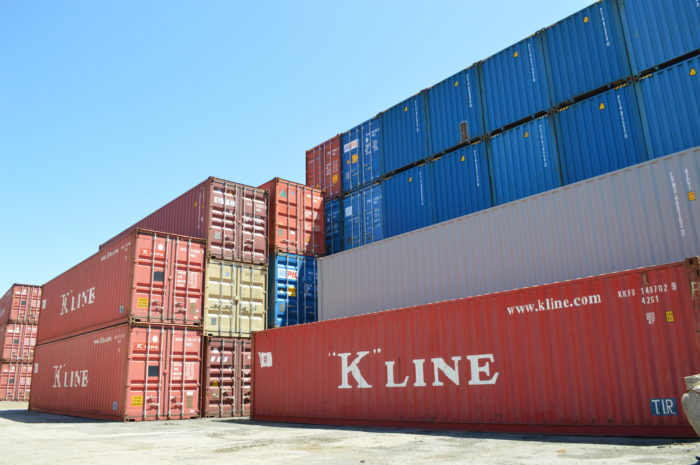
Why is storage charged?
The fee is intended to compensate the facility for the use of physical space and to discourage shippers from treating this space as a storage site. In some countries, due to lack of space inside the port/terminal, storage charges can be quite exorbitant. To alleviate this problem, the shipping line may move the container to a private depot, such as ContainerPort Group (CPG) to reduce costs.
Storage fees can occur under the below conditions:
-
On import full container(s) at the port or inland terminal while it is under the custody of the shipping line before the container is released to the importer.
-
On import full container(s) at a customs bonded warehouse where the importer or customs have requested it to be moved for the purpose of inspection etc.
-
On export full containers at the port or inland terminal while it is under the custody of the shipping line before the container is shipped on board. This could generally happen if the exporter has already moved the container into the port, but has some documentary or other issues to sort out before it is shipped.
-
On containers that are detained by Govt. authorities like Customs and Border Protection (CBP), Health, Police etc.
Storage is charged and collected by the entity that is storing the container in their facility for the shipping line or the exporter or importer. It is possible that a container can incur both demurrage and storage on the same shipment.
Conclusion
Port congestion, winter weather, and capacity constraints have led to a considerable increase in the occurrence of detention and demurrage fees. While some delays that lead to these fees may be out of the shipper’s control, shippers are often responsible for paying the bill.
Now that you know what demurrage and detention fees are and how they come to be, you have the power to conquer these fees with a little bit of proactive planning, which will help you avoid unpleasant surprises on your freight bill.
In closing, here are all of the clear-cut definitions in one place:
Free time: That amount of time that a carrier’s equipment may be used without incurring additional charges.
Last Free Day (LFD): Last Free Day at the port or rail ramp before steamship line starts charging demurrage or Last Free Day for the ocean container taken out from the port or rail ramp before steamship line starts charging “per diem” or usage fee.
Demurrage: Costs incurred by a customer for using equipment beyond the given free time inside the terminal. Demurrage is charged when containers are still full and under the control of the shipping line, and have not been cleared through customs or picked up by the consignee.
Detention: Costs incurred by a customer for using equipment beyond the given free time, typically outside of the terminal. Detention is charged when the carrier’s equipment is still in use by the shipper or consignee beyond the LFD, regardless if full or empty.
Per Diem: A detention fee where a fixed rate is charged per container per day until the equipment is returned to the port. Per diem and detention are often used interchangeably.
Driver Detention: A fee, typically charged at an hourly rate, that a carrier may assess when driver wait time, either at the origin/pickup or destination/delivery location, exceeds the given free time for loading or unloading the truck.
Storage / Ground Rent: Also sometimes referred to as “quay rent”, storage/ground rent is the cost incurred by a customer for using physical space at port, terminal, warehouse, depot, or inland container yard facilities.